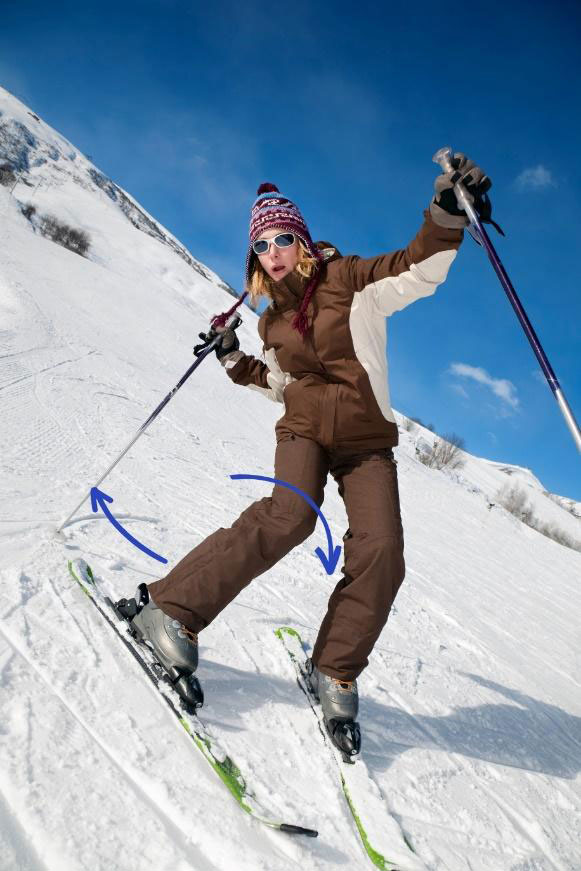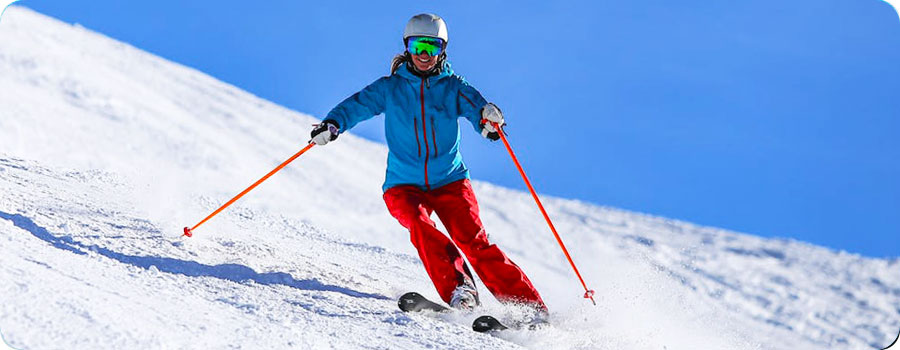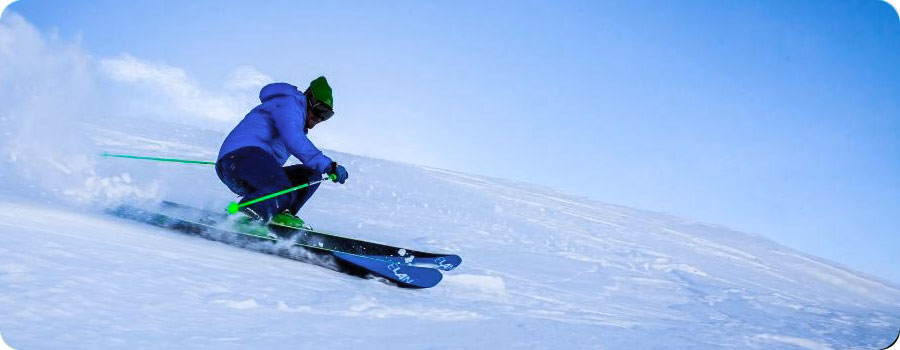Common ski injuries
As any skier will know, this is a physically demanding sport. Muscles and joints must suddenly cope with new and challenging activity. Long days of constant exertion mean fatigue, too – and that’s before we mention the après-ski!
So, what kinds of injury do skiers face?
Analysis of the 2019/20 French ski season showed that the knee is by far the most common site of damage, accounting for nearly half of all injuries. Twisting motions of the knee during falls can damage ligaments and cartilage, leading to pain, swelling and instability. Typically, the front edge of the ski catches, forcing the lower leg away from the midline and rotating it. Shoulders and wrists are also at risk of strain, sprain, fracture or dislocation. We naturally want to break a fall with outstretched arms, which then bear the brunt of the impact. Other common sites of trauma include the ankles, the back and pelvis, the head, and the thumbs. ‘Skier’s thumb’ happens when a fall onto the handle of your ski pole bends the thumb outwards, damaging the ligaments at its base. Happily, severe trauma is rare among skiers. But it's worth taking steps to prevent common injuries spoiling your fun.
The lower leg is pulled out and rotated as the
front of the ski catches, twisting the knee.
front of the ski catches, twisting the knee.
Who is most at risk of injuries?
Most injuries occur because of falls or collisions. There are several factors that make these more likely:
- Being a beginner – it comes as no surprise that inexperienced skiers fall more often than others!
- Children and adolescents have a higher risk of fracture , as do beginners.
- Male skiers are more prone to spinal injuries. The reason isn’t clear, but one explanation is that they’re more likely to take chances.

Six top tips to prevent injuries
Improve your balance
- Balance is a combination of proprioception (the sense of body position) and control. You can train both these by using a balance ball, or use a tilt board to mimic the ski carving movements you’ll be doing on the slopes.Strengthen your gluteal, quadriceps and hamstring muscles
These muscles control and protect your knees, so good strength is vital. Train them dynamically, for example by using a Swiss ball, rather than statically (such as doing wall squats).Increase your core stability
Your core muscles keep your body stable while your limbs are working. Try planks, lifting the opposing arm and leg off the ground, and then alternating. This improves dynamic cross-body stability, which you’ll need to help prevent injuries on the slopes.Train for endurance
A full day’s skiing requires plenty of stamina, so don’t forget to include cardiovascular training in your schedule. Try running, biking or swimming to improve lung capacity and endurance.Invest in your equipment
Your investment might simply be time in the hire shop. But ensuring your skis are right for your ability and you have a well-fitting helmet can reduce accidents or limit their severity. Bindings that are too tight are commonly implicated in knee injuries, so take time to ensure they’re adjusted to as light a setting as reasonable.Deal with any injuries or niggles before you leave
The physical challenge of skiing will quickly show up any vulnerable or weak spots, so make sure you have any old injuries or pains seen to. Your body will try to compensate for pain by reducing load. Unfortunately, this means other parts of your body will take more of the strain.
Check in with your osteopath, who can assess you, treat injuries and deal with imbalances.
Heading to the slopes this winter?
Get pre-season assessment, treatment and advice from our team of expert osteopaths. Book an appointment at our clinic in central Tunbridge Wells today.
Stay Healthy This Winter
For further information on how to stay healthy this Winter, read our article "Healthy Tips For The Winter Season"

